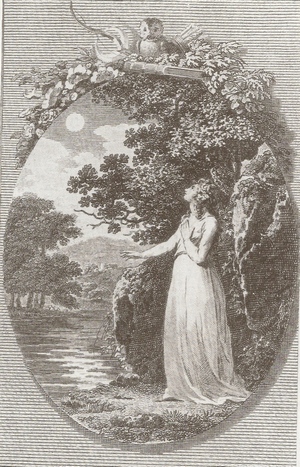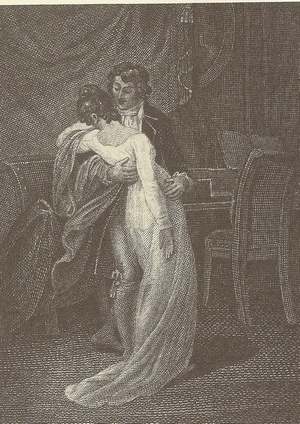Proposal for a paper to be given on a panel on “The Secret and the Celebrated: Life-Writing by and about Notorious Figures” for East Central/American Society for 18th Century Studies, November 1-3, 2012
“But tell me yet, dost thou not know my voice?” – Charlotte Smith

An unwritten but enforced convention in English texts of the eighteenth and most of the nineteenth century was that once a female character has had sexual intercourse with a man outside marriage, she was relegated to the back stage of the story: either not seen and a subject for brief references themselves shaped by the notion this is not what we can talk of, even bring up; or they were dramatized as part a back-story, a history previous to the present time, narrated by a morally acceptable character. French fiction allowed such female characters on stage, as long as it was clear they could not be mistaken for the tale's exemplary heroine or are framed as a warning lesson and punished. Further barriers included norms of decorum, plausibility and demands that nothing centrally disquieting (like willing suicide) be put before a reader. And yet by the opening of the 18th century writers of all types were transforming the novel precisely to bring out into the discussably open the violence and brutalities of everyday life.
This paper will discuss ways that Smith, Radcliffe, Brunton and Cottin managed to depict this tabooed sexual matter. All analyze elements of female consciousness coping with the primal structures of their societies through semi-factual fiction, translation and adaptation, theatrical, gothic and picturesque, and epistolary motifs, travel writing, letters and poetry. At the same time we'll see they did not overcome the implicit shaming and ridicule that was attached to anyone publishing such texts. Smith and Cottin became personally identified with their fictions and found themselves criticized harshly, even excoriated. Brunton did all she could to deflect such identification; her work was consequently described as implausible, ridiculed and she erased as of no interest. Radcliffean gothic is a byeword for drivel, and that she went mad from writing Udolpho still not gone from recent essays about her. We'll see the importance of the interaction of French and gothic, with Anglo and Scottish fictions as a kind of crucible whereby writers could create texts that might otherwise be dismissed or rejected as pornography, narrowly personally sentimental or (without using the terms) proto-feminist and political radicalism.
To keep the paper brief I am now planning to make Smith's Manon and Romance of Real Life, Brunton's Self-Control and Cottin's Amelie Mansfield my focus, but as my subject is a line of passionate and gothicized autobiographical or semi-biographical texts, often by women, which deal with their sexual desires, with coerced marriage, rape and pregnancy, poverty (and primogeniture); gambling, male violence (over sexual possession of women in duelling), murder, primal intrasexual antagonism, I may chose other texts in the end. For example, Cottin's Clare d'Albe or Smith's Young Philosopher or Desmond. The aim of my project is to persuade the reader to recognize in the pathological symptoms of this writing a mirror, however distorted, of the actualities of real (not fictional) female and male identities caught up in a system where an old order (the ancien regime) was dying and a new one fighting strangling at birth.

Home
Contact Ellen Moody.
Pagemaster: Jim Moody.
Page Last Updated 9 September 2011